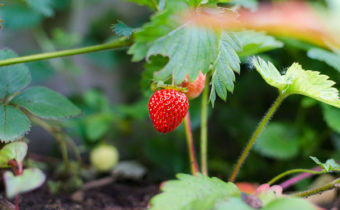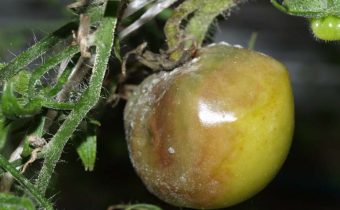Folk remedies for thrips on tomatoes
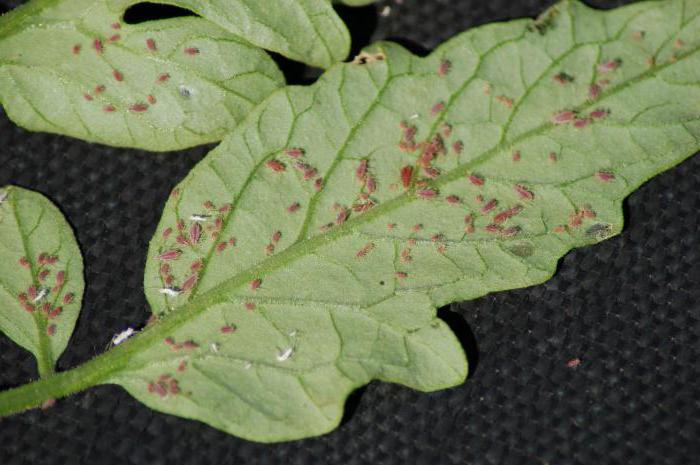
Tomatoes can attack various pests, these include thrips. The appearance of sucking insects on tomatoes may indicate a deterioration in the condition of the plants. With careful inspection, the leaves can detect yellow spots and accumulation of waste products of insects.
The pests themselves are mainly located on the inside of the leaves. The lack of measures can lead to the death of plants, and as a consequence of the loss of a large number of crops.
Pest description
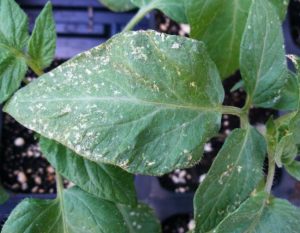 The body length of an adult insect is 1-2 mm, the color is homely, depending on the species, it may be black, brown or grayish. The larvae are small, with a small number almost invisible. They have an unremarkable color, usually they are pale yellow, brown or gray. They reproduce with incredible speed, their number doubles in just 4-7 days. The optimum temperature for insects + 20-25 degrees. More than 2000 species of pests differ, in the territory of the Russian Federation there are approximately 230 species. They all lead a secretive lifestyle, hiding in buds, on leaves, may inhabit the stamens of flowers. Some live in the soil, they are all the more difficult to detect.
The body length of an adult insect is 1-2 mm, the color is homely, depending on the species, it may be black, brown or grayish. The larvae are small, with a small number almost invisible. They have an unremarkable color, usually they are pale yellow, brown or gray. They reproduce with incredible speed, their number doubles in just 4-7 days. The optimum temperature for insects + 20-25 degrees. More than 2000 species of pests differ, in the territory of the Russian Federation there are approximately 230 species. They all lead a secretive lifestyle, hiding in buds, on leaves, may inhabit the stamens of flowers. Some live in the soil, they are all the more difficult to detect.
The most common types of thrips
- Rare - they live in flowers, feed on all varieties of vegetation.
- Decorative - found in the northern regions and central parts of Russia, striking decorative cultures.
- Rose plants are insects up to 3 mm long, live in buds, harm flowers and leaves.
- Tobacco - in addition to tobacco, they can settle on some vegetable crops, more than 400 species of plants are susceptible to pest invasion. Also tobacco thrips disease carriers.
- Western flower thrips are distributed almost throughout the globe. Can affect most plants, carry dangerous diseases.
If you do not take measures, the pests simply destroy the tomatoes.
How to detect a pest?
When it appears, it is not easy to identify the pest. Thrips perfectly masked, with this helps them inconspicuous color and small size of the calf. In addition, insects are located on the back of the sheet, and not every gardener regularly inspects the plants. At first, rarely anyone realizes that new “neighbors” have appeared on the site. Later, when the insects have multiplied (and they do it very quickly), they can be detected by the characteristic symptoms:
- openwork mesh on foliage;
- residues of waste products of black color;
- yellow pigmentation on the leaves, which over time only increases and merges into one spot;
- deterioration of the general condition of the seedlings, it becomes weak and lifeless.
Causes of thrips on tomatoes
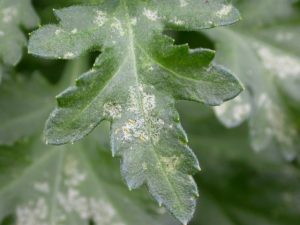 If pests have settled on the seedlings, first of all, you need to identify the cause. This is necessary in order to eliminate thrips, and in the future to prevent their appearance and distribution.
If pests have settled on the seedlings, first of all, you need to identify the cause. This is necessary in order to eliminate thrips, and in the future to prevent their appearance and distribution.
- the absence or non-compliance with the rules of disinfection of containers, soil, greenhouse;
- infected plants;
- poor seedling care;
- high humidity;
- ignoring crop rotation rules;
Prevention
Sometimes gardeners themselves provoke the appearance of pests on the site. Taking preventive measures will help protect the plants from invasion.It is better to start preparing for the planting season in the fall, otherwise the larvae hibernating in the soil, with the advent of heat, become more active and will attack young, juicy seedlings. To preventive measures include:
- crop rotation, it is impossible to plant the same crop in the same place for several years.
- thorough cleaning and deep soil digging before the onset of winter;
- disinfection of rassadny containers, designs in the greenhouse;
- replacement or spilling of soil with a solution of manganese;
- purchase only high quality planting material;
- planting nearby calendula, garlic, taggetes tomatoes;
- timely removal of weeds;
- regular inspection of plants;
Folk remedies
They are highly effective only at the initial stages of infection. Will help to cope with a small number of pests. If thrips managed to multiply, the use of popular methods will not give the desired result. Below are a few recipes for dealing with thrips:
Marigold infusion
 An excellent means for repelling pests, they simply do not tolerate the smell of these flowers. Suitable for prevention and for the destruction of a small number of insects.
An excellent means for repelling pests, they simply do not tolerate the smell of these flowers. Suitable for prevention and for the destruction of a small number of insects.
Composition:
- water;
- marigold flowers;
Preparation and use
The solution is prepared at the rate of 50 grams of flowers per liter of water. The flowers are crushed, put in a saucepan and pour cold water. Then put on the fire and bring to a boil. Liquid insist three days. Then filtered, poured into the sprayer and sprayed the ground part of the plant. If necessary, the procedure is repeated after 5-7 days.
Garlic Infusion
It is used not only to combat thrips, but also with other harmful insects. Preparation of funds takes a day.
Composition:
- garlic;
- water;
Preparation and use
A few cloves of garlic must be crushed or finely chopped, then pour 200 ml of hot water. Withstand the solution for a day, and spray the affected plants.
There are also other anti-sucking insects such as soap solution or celandine decoction. They also effectively cope with thrips.
In greenhouse conditions, thrips live and increase their population throughout the year.
Conclusion
Thrips are dangerous pests, they can destroy not only tomatoes, but also other garden crops. In addition, some types of disease carriers. It is necessary to fight with them immediately, strictly observing the dosage, otherwise it is possible to harm not only pests, but also plants.


